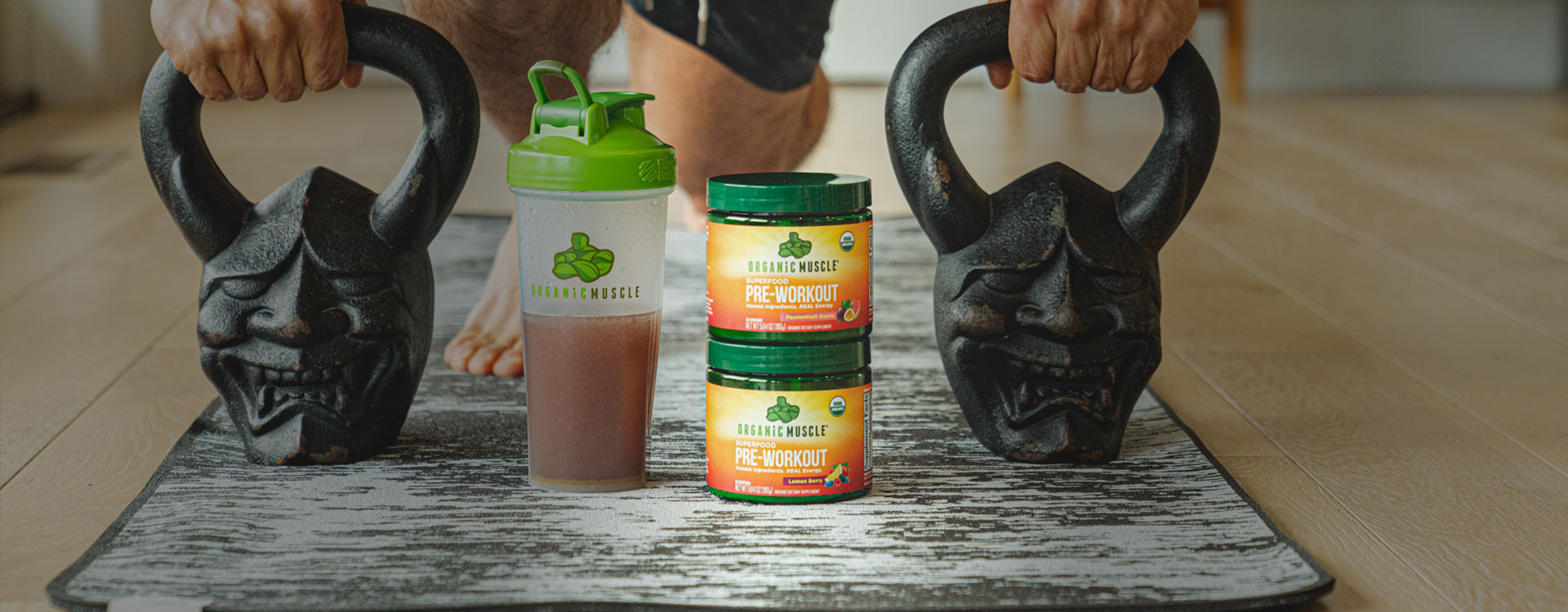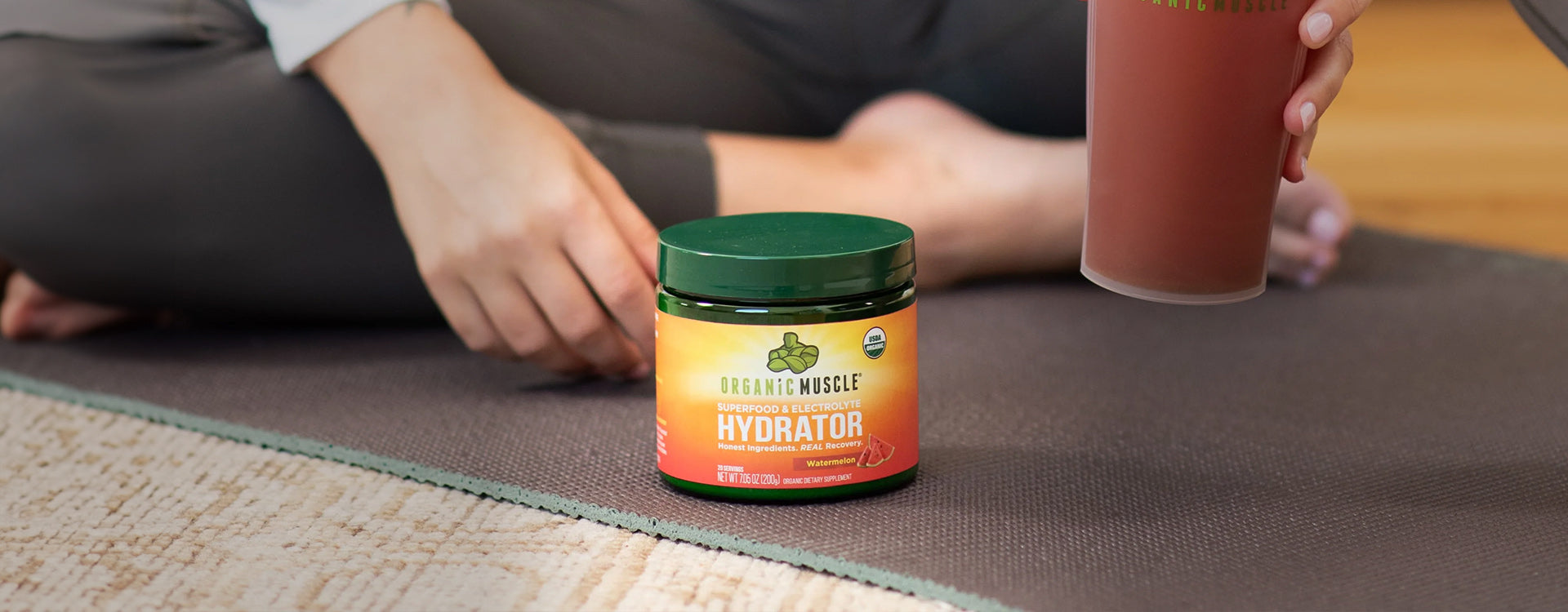Key Takeaways:
- Enhancing Hamstring Strength and Flexibility: Strengthening and stretching the hamstrings improves athletic performance, posture, and daily functional mobility.
- Warm-Up and Dynamic Stretching: Proper warm-up techniques and dynamic stretching are essential to prepare hamstrings for workouts and prevent injuries.
- Avoiding Common Mistakes: Prioritize recovery, balance training, and correct form to avoid hamstring strains and maximize workout effectiveness.
When it comes to achieving a well-rounded fitness regimen, focusing on hamstring workouts is crucial for anyone looking to enhance their flexibility, stability, and explosive power. Hamstrings, the muscles located at the back of the thigh, are pivotal in almost every major athletic movement — from running and jumping to squatting and deadlifting. However, these muscles are often neglected despite their importance, leading to imbalances and increased injury risk. Incorporating specific hamstring workouts into your routine can prevent these issues and significantly boost your overall performance.
This article is designed to guide fitness and health enthusiasts to the top hamstring workouts that cater to both flexibility and explosive strength. Through a combination of stretching and strength exercises, you can develop hamstrings that are not only strong but also supple, reducing the risk of injury and improving your performance in a wide variety of activities. So, whether you're a dedicated athlete or simply looking to enhance your fitness routine, read on to discover how to take your hamstring training to the next level.
The Anatomy Of The Hamstring: Why It Matters For Performance
The hamstrings, a group of muscles located at the back of the thigh, play a pivotal role in athletic performance. Understanding their anatomy and function is essential for optimizing performance and preventing injuries.
Anatomy of the Hamstrings
The hamstrings consist of three primary muscles:
- Biceps femoris: The largest of the three, it runs along the outer thigh.
- Semitendinosus: Located on the inner thigh, it has a long tendon.
- Semimembranosus: Also on the inner thigh, it is deeper than the semitendinosus.
These muscles work in conjunction to perform various movements, including:
- Running: The hamstrings are crucial for propulsion and maintaining stride length.
- Jumping: They provide power for jumping and landing.
- Squatting: They assist in extending the hip and knee.
- Core stability: The hamstrings contribute to a strong core by stabilizing the pelvis.
Key Benefits Of Improving Hamstring Flexibility And Strength
Here are several key benefits of focusing on hamstring workouts that improve flexibility and explosive power:
Enhanced Athletic Performance
The hamstrings are pivotal in many forms of athletic movement, from running and jumping to cycling and swimming. Strengthening these muscles, alongside improving their flexibility, can lead to significant enhancements in speed, agility, and explosive power. For athletes looking to elevate their performance, targeted hamstring workouts are non-negotiable.
Reduced Risk of Injury
Tight or weak hamstrings are a common culprit behind lower body injuries, particularly those involving strains and tears. By incorporating flexibility and strength exercises into your routine, you can increase the resilience of your hamstrings. This not only helps in warding off injuries but also in ensuring a swift recovery should any issues arise.
Improved Posture and Alignment
The health of your hamstrings influences the alignment of your pelvis and, by extension, your entire spine. Strong, flexible hamstrings contribute to a balanced body posture, reducing the stress on your lower back and mitigating the risk of developing chronic pain in the area. This benefit cannot be overstated for individuals who spend long hours sitting.
Increased Functional Mobility
Whether reaching down to tie your shoes or stepping out of a car, hamstring flexibility and strength play crucial roles in everyday movements. Enhancing these attributes through dedicated workouts can lead to a noticeable improvement in functional mobility, making daily tasks easier and more enjoyable.
Essential Warm-Up Techniques To Prepare For Hamstring Workouts
Before tackling hamstring workouts that can enhance flexibility and explosive power, it's crucial to engage in proper warm-up techniques. These preparatory steps prime your muscles for the work ahead and significantly reduce the risk of injury.
Dynamic Stretching
Dynamic stretching involves movement-based stretches that increase blood flow and flexibility. Instead of holding a single pose, dynamic stretches include gentle, repetitive movements that gradually increase range and speed. Key dynamic stretches for the hamstrings include leg swings and walking lunges. Focus on making these movements fluid and controlled, aiming for 10-15 repetitions per leg to warm up adequately.
Foam Rolling
Foam rolling is another excellent technique to prepare your hamstrings and adjacent muscles. By applying pressure to your muscles and fascia, foam rolling helps increase blood circulation and break down tight spots, improving mobility and performance. Spend approximately 1-2 minutes rolling each hamstring, paying extra attention to any particularly tight or tender areas.
Activation Exercises
Activation exercises specifically target the muscles you'll be working, in this case, the hamstrings, to 'wake them up' before the main workout. Glute bridges and single-leg deadlifts with just your body weight are excellent. These exercises ensure that your hamstrings are ready to fully engage and work efficiently during your workout, enhancing performance and results.
Top Hamstring Workouts For Enhancing Flexibility
Here are top hamstring workouts designed to boost your flexibility.
Standing Hamstring Stretch
This simple yet effective stretch can be done anywhere, making it perfect for warming up or cooling down after workouts.
- Stand tall with your feet hip-width apart.
- Slowly bend forward at the hips, allowing your hands to reach towards the floor.
- Keep your knees slightly bent and hold this position for 15-30 seconds.
- Gradually increase the time as your flexibility improves.
Towel Hamstring Stretch
An excellent way to deeply stretch your hamstrings without needing anything more than a towel.
- Lie on your back with one leg bent and the other straight out in front of you.
- Loop a towel around the foot of the straight leg and gently pull back on the towel, bringing your leg towards you.
- Keep your knee as straight as possible without locking it.
- Hold for 15-30 seconds before switching legs.
Lying Hamstring Stretch with Resistance Band
Using a resistance band can help deepen the stretch while adding a slight challenge to your flexibility routine.
- Lie on your back and wrap a resistance band around the foot of one leg.
- Keep the other leg flat on the ground.
- Gently pull on the band, bringing your leg toward you, keeping it straight.
- Hold for 15-30 seconds and then switch legs.
Yoga Poses for Hamstring Flexibility
Incorporating yoga into your routine can offer a comprehensive approach to enhancing flexibility. Poses like Downward-Facing Dog and Forward Fold specifically target the hamstrings and can be modified for all levels of flexibility.
- To perform Downward-Facing Dog, start on all fours, then lift your hips up and back, straightening your legs as much as possible.
- For a Forward Fold, stand straight, then hinge at the hips to lower your upper body, trying to get your fingers or palms to the floor, or as close as possible.
Strength-Building Hamstring Exercises For Explosive Power
Incorporating strength-building exercises into your routine is crucial for developing explosive power in your hamstrings. While flexibility is essential for preventing injuries, the amalgamation of strength and flexibility ensures your hamstrings can perform effectively and efficiently. Here are some key exercises to integrate into your workout plan.
Romanian Deadlifts
The Romanian Deadlift (RDL) is an exceptional exercise for targeting the hamstrings, glutes, and lower back. This movement emphasizes the hip hinge, a fundamental motion for explosive activities. To perform an RDL:
- Stand with your feet hip-width apart, holding a barbell or dumbbells in front of your thighs.
- Keeping your knees slightly bent, hinge at your hips to lower the weights toward the floor.
- Lower the weights until you feel a stretch in your hamstrings, then drive through your hips to return to the starting position.
- Perform 3-4 sets of 8-12 repetitions.
Glute-Ham Raises
Glute-Ham Raises focus on the hamstring's ability to extend the hip and bend the knee simultaneously — crucial for sprinting and jumping.
- Adjust the glute-ham developer (GHD) machine so your feet are secured and your torso can pivot freely.
- Start at the top position with your body in a straight line from head to knees.
- Slowly lower your body by extending your knees until you are horizontal.
- Use your hamstrings and glutes to pull yourself back to the starting position.
- Aim for 3-4 sets of 6-8 repetitions.
Bulgarian Split Squats
This unilateral exercise not only builds strength but also addresses imbalances between legs. It emphasizes the hamstrings, glutes, and quadriceps.
- Stand a couple of feet in front of a bench or stable platform, and place the top of one foot on it.
- Lower your hips toward the floor by bending your standing leg, keeping your torso upright.
- Push through your front foot to return to the starting position, focusing on using your hamstrings and glutes.
- Complete 3 sets of 8-10 reps on each leg.
Stability Ball Hamstring Curls
An exercise that enhances hamstring strength while engaging the core and stabilizer muscles.
- Lie on your back with your feet placed on a stability ball and your arms by your sides for balance.
- Lift your hips off the ground into a bridge position, then roll the ball towards your body by bending your knees and pulling your heels towards you.
- Extend your legs to roll the ball back to the starting position.
- Perform 3-4 sets of 10-15 repetitions.
Single-Leg Deadlifts
Single-Leg Deadlifts are excellent for hamstring development, balance, and core stability.
- Stand on one leg, holding a dumbbell or kettlebell in the opposite hand.
- Keeping a slight bend in your standing leg, hinge at the hip and lower the weight toward the floor, extending your free leg behind you for balance.
- Push through your standing leg to return to the upright position.
- Execute 3 sets of 8-12 reps on each leg.
By incorporating these strength-building exercises into your routine, you will enhance the explosive power of your hamstrings and contribute to overall lower body strength and stability.
Incorporating Dynamic Stretching Into Your Hamstring Routine
Dynamic stretching is a crucial component of any comprehensive hamstring workout routine. Unlike static stretching, which involves holding a stretch for a prolonged period, dynamic stretching involves moving parts of your body and gradually increasing reach, speed, or both. This type of stretching prepares your muscles for physical activity and enhances both flexibility and explosive power, making it an essential practice for fitness and health enthusiasts.
Why Dynamic Stretching is Vital for Hamstring Health
Hamstring muscles, which span the back of your thighs from your hip to just below your knee, play a significant role in many activities, including running, jumping, and squatting. Increasing their flexibility and strength through dynamic stretching can significantly reduce the risk of injury and improve their performance in various physical activities.
-
Improves Circulation - Dynamic stretches enhance blood flow to your muscles, providing them with the oxygen and nutrients needed for your workout, thereby improving your performance and recovery.
-
Enhances Mobility - Regular dynamic stretching increases the range of motion around your joints, particularly the hips and knees, which in turn assists in achieving a fuller range of motion during your hamstring workouts.
- Prepares Muscles for Activity - By simulating the movements of your exercise routine, dynamic stretching helps to "wake up" your muscles, making the transition into high-intensity activities smoother and less jarring on your body.
Key Dynamic Stretches for Your Hamstrings
Incorporate the following dynamic stretches into your routine to enhance hamstring flexibility and explosive power:
-
Leg swings: Hold onto a stable surface and swing one leg forward and back. Start with small swings, gradually increasing the height as your muscles loosen. Perform 10-15 swings on each leg.
-
Walking lunges with a twist: Step forward into a lunge, keeping your knee above your ankle. Twist your torso toward the leg that is in front. This move stretches your hamstrings and engages your core. Repeat 10 times on each leg.
-
High knees: Jog in place, lifting your knees as high as possible to increase your heart rate and stretch your hamstrings. Aim for 30 seconds to 1 minute for a quick, effective dynamic stretch.
- Inchworms: Start standing, bend at the waist, and walk your hands forward into a plank position. Then, walk your feet toward your hands, keeping your legs straight. This not only stretches the hamstrings but also warms up your entire body.
Common Mistakes To Avoid In Your Hamstring Training
When embarking on a journey to enhance hamstring flexibility and develop explosive power, the road is fraught with potential missteps that can halt progress or lead to injury. As we delve deeper into the realm of effective hamstring workouts, it's crucial to sidestep these common pitfalls to ensure a safe and successful training regimen.
-
Neglecting Warm-Ups: One of the gravest errors is to dive into intensive hamstring exercises without adequately preparing your muscles. A comprehensive warm-up increases blood flow, enhances flexibility, and reduces the risk of strains. Incorporate dynamic stretches and light cardio to prime your hamstrings for the workout.
-
Overlooking Flexibility Training: While the focus on building explosive power is vital, the development of flexibility is equally important. Flexibility training, such as dynamic stretching and yoga, should be a staple in your routine, not an afterthought. It enhances muscle recovery, reduces stiffness, and improves the overall range of motion, making your hamstrings more resilient.
-
Skipping Recovery Days: The zeal to achieve quick results often leads to neglecting rest and recovery. Like any other muscle group, hamstring muscles require time to repair and strengthen. Integrating rest days into your workout plan prevents overtraining, reduces the risk of injury, and allows muscles to recover and grow stronger.
-
Imbalance in Training: Focusing solely on hamstring workouts without addressing the surrounding muscle groups can create imbalances that may lead to poor posture, decreased performance, and injuries. Ensure your regime includes exercises that strengthen the quadriceps, glutes, and core to maintain balance and support hamstring health.
-
Poor Technique and Form: Compromise on form can lead to ineffective workouts or injuries in the pursuit of power and flexibility. Maintaining proper technique is paramount when performing deadlifts, leg curls, or stretches. Consult with fitness professionals or refer to credible resources to understand the correct form for each exercise.
- Rapid Progression: Increasing the intensity and volume of your workouts too quickly can shock your muscles and lead to strains or sprains. Hamstring development is a gradual process. Focus on progressive overload, gradually increasing the weight or resistance as your strength and flexibility improve, ensuring sustainable progress.
Final Thoughts
Enhancing your hamstring flexibility and explosive power can greatly improve your overall performance and reduce the risk of injury. The hamstring workouts discussed are not only effective but also easily incorporated into your fitness regime. Remember, consistency is key to achieving and maintaining optimal results. As you engage in these exercises, paying attention to your body is crucial, ensuring you're not pushing too hard too soon to avoid any potential injuries.
At Organic Muscle, we understand the importance of complementing your workout routine with high-quality nutritional support. Our products are designed to fuel your body with pure, plant-based ingredients that are Certified Organic, non-GMO, Vegan, and free from harmful chemicals and preservatives. By choosing our supplements, you're investing in your physical fitness and overall health and well-being.
We are committed to supporting your fitness journey every step of the way, providing the clean, natural fuel your body needs to achieve remarkable flexibility and explosive power. Let Organic Muscle be your partner in achieving the healthy, vibrant lifestyle you deserve. Remember, never settle for less than the best regarding your health and fitness.
Read also:
- 10 Best Leg Workouts For Runners To Boost Endurance
- 10 Best Ab Workouts To Sculpt Your Core
- How To Build Muscle On A Vegan Diet: Secrets From Top Plant-Based Athletes
Frequently Asked Questions About Top Hamstring Workouts For Flexibility And Explosive Power
Should I stretch my hamstrings before or after workouts?
It's generally recommended to perform dynamic stretches before workouts to warm up the muscles, increase range of motion, and save static stretching for after workouts. Dynamic stretching before engaging in hamstring workouts can prepare your muscles for activity and reduce injury risk, while static stretching post-workout can aid in flexibility and recovery.
Can yoga improve hamstring flexibility and strength?
Yes. Yoga is an excellent way to enhance both hamstring flexibility and strength. Poses like Downward Dog, Forward Fold, and Triangle Pose focus on lengthening and strengthening the hamstrings. Regular yoga practice can complement your hamstring workouts by increasing muscle endurance and reducing the risk of injury.
Are there any specific workouts for runners to boost hamstring performance?
Runners can benefit from hamstring-specific exercises that target strength, flexibility, and endurance. Incorporating Nordic hamstring curls, stiff-legged deadlifts, and leg curls can improve performance and resilience. Additionally, plyometric exercises like jump squats and box jumps can enhance explosive power, which is crucial for runners looking to increase speed and power.
Are there any risks of overtraining the hamstrings?
Yes, overtraining the hamstrings can lead to strains, tears, or chronic pain. It's important to balance workouts with adequate rest, maintain proper form, and listen to your body's signals. Incorporating rest days and focusing on a holistic training program that addresses all muscle groups can mitigate risks associated with overtraining.
How can I prevent hamstring injuries during workouts?
To prevent hamstring injuries, warm up thoroughly before intense exercise and cool down properly afterward. Focus on maintaining good form during exercises, gradually increasing intensity, and incorporating flexibility and strengthening exercises into your routine. Staying hydrated and adhering to a balanced diet can support muscle health and prevent injuries.
What equipment do I need for effective hamstring workouts?
While many hamstring exercises can be performed with bodyweight alone, incorporating equipment like resistance bands, dumbbells, barbells, and stability balls can enhance your workouts; for those looking to increase strength, weights and leg curl machines can offer targeted resistance. For flexibility, using a yoga mat and straps can assist in deepening stretches safely.
|
Disclaimer: Organic Muscle products are not intended to treat, diagnose, mitigate, prevent, or cure disease. Organic Muscle products should not replace prescribed medications or the variety of foods important to a healthful diet. |













